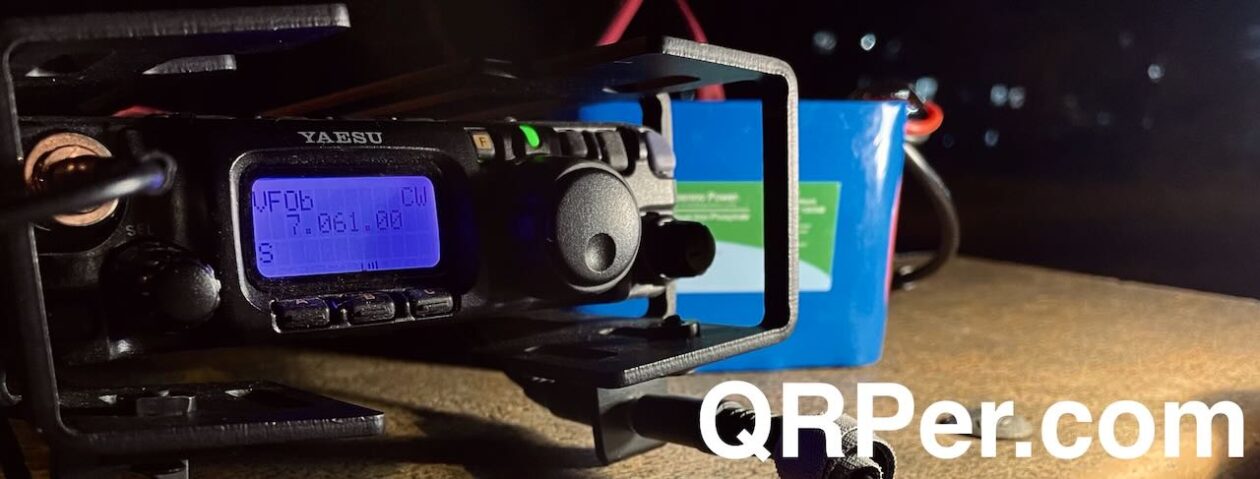Last week, we recorded an episode of the Ham Radio Workbench podcast. Our main topic was Winter Field Day, but we also discussed our plans for 2025—not just workbench projects but our overall goals and what’s on the calendar.
Lately, I’ve been so focused on the present and immediate future (sorting out post-storm property repairs, etc.) that I hadn’t really taken the time to think about our bigger plans.
I may tweak this list over time, but here’s what’s on my mind so far:
Projects:
- A proper, thorough shack purge: I really need to cut a lot of the detritus out of my QTH radio space.
- Attend at least four hamfests with N3CZ as vendors to help accomplish the first point!
- Use PSK-31 and other digital modes more frequently.
- Finally build that QCX+!
- Develop our Swannanoa Valley GMRS network and grow the user base through public information sessions.
- Spend more time QRPp and experiment with antenna choices: I do love playing radio with one watt or less!
Where I plan to go:
- The Charlotte Hamfest
- RARSfest (timing for this one is always tricky for me, but I’ll do my best!)
- Four Days in May
- Hamvention 2025 (I’ll be at the Ham Radio Workbench table with the crew)
- A multi-week family trip this summer (possibly a road trip or something further afield by air—it all depends on my daughters’ summer studies schedule).
- WCARS Hamfest (if we’re in the country)
- The W4 SOTA Fall Campout
I’d love to attend Ozarkcon, but that weekend is a tough one—perhaps if I skip RARSfest, I could make it. I’d also love to attend the Huntsville Hamfest, but I suspect it’ll conflict with university move-in dates for my daughters.
A true bucket list item is Messe Friedrichshafen, but unfortunately, the date this year conflicts with another commitment.
What I’m looking forward to:
- Checking out the new Yaesu FTX-1F (I paid to reserve one with DX Engineering)
- Ham Radio Workbenches On The Air (coming in March—details will be announced soon on the HRWB website).
- Getting back into SOTA (Hurricane Helene really set me back here)
- Taking my vintage Swiss Army Rucksack to the field!
- More camping! Depending on the car we choose to replace the Subaru Forester, I may or may not get to use my awesome C6 rooftop tent
I may add more to this list, but you might notice there are no numerical goals—for example, specific targets for POTA or SOTA activations. This year, we’re still focusing on getting back on our feet. Maybe next year, I’ll set goals in that regard.
 You might also notice that I don’t have any active goal of growing my YouTube channel’s subscriber base. Indeed, I never have. Honestly, my philosophy has always been that people who enjoy my channel will find it organically. What makes my channel so fun for me is not worrying about subscriber numbers, channel metrics, or stats.
You might also notice that I don’t have any active goal of growing my YouTube channel’s subscriber base. Indeed, I never have. Honestly, my philosophy has always been that people who enjoy my channel will find it organically. What makes my channel so fun for me is not worrying about subscriber numbers, channel metrics, or stats.
Following the YouTube algorithm often leads to stress, clickbait, and compromising one’s vision. It also creates a certain sameness among channels, which I’m just not interested in. I love the community around my channel and am happy to let it grow naturally.
Thank you for making this QRPer community such an amazing one!
How About You?
I’d love to hear what your plans and projects are for this year. Please comment below!



















 I also added a USB port to the battery pack because the (tr)uSDX can operate with around 0,5W directly from USB and that’s a great way to test for SWR and fine tune the antenna without stressing the finals.
I also added a USB port to the battery pack because the (tr)uSDX can operate with around 0,5W directly from USB and that’s a great way to test for SWR and fine tune the antenna without stressing the finals.




























 Notably, Gov. Cooper is a fan of amateur radio, especially appreciating its vital role in past weather emergencies and particularly recent disaster operations after the tragic results of Hurricane Helene this fall in Western North Carolina.
Notably, Gov. Cooper is a fan of amateur radio, especially appreciating its vital role in past weather emergencies and particularly recent disaster operations after the tragic results of Hurricane Helene this fall in Western North Carolina.
























